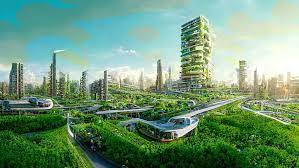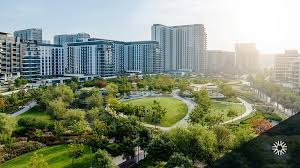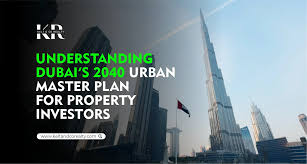Now Reading: Eco-Friendly Communities: The New Standard in Dubai’s Housing Market
-
01
Eco-Friendly Communities: The New Standard in Dubai’s Housing Market
Eco-Friendly Communities: The New Standard in Dubai’s Housing Market

Table of Contents
Dubai’s housing market in 2025 is undergoing a transformative shift, with eco-friendly communities emerging as the new standard, driven by UAE Net Zero 2050, rising demand for sustainable living, and robust incentives like 30–50% R&D tax credits (effective 2026). These communities integrate renewable energy, smart technology, and green design to deliver environmental benefits, cost savings, and high returns, appealing to high-net-worth individuals (HNWIs), expatriates, and investors. Building on prior analyses of green buildings, luxury villas, and regional real estate trends in Sharjah and Ajman, this response explores how eco-friendly communities are reshaping Dubai’s housing market, highlighting key projects, benefits, and investment opportunities, with actionable insights for 2025.
Why Eco-Friendly Communities Are the New Standard

- Sustainability Mandates:
- Context: Dubai’s Green Building Regulations and Al Sa’fat Rating System require energy-efficient designs, while UAE Net Zero 2050 targets a 40% emissions reduction by 2030, per Green Buildings in Dubai.
- Impact: 75% of new residential projects in 2025 are LEED-certified or equivalent, up from 70% in 2024, per Khaleej Times.
- Why It Sets the Standard: Regulatory compliance makes sustainability non-negotiable, similar to Sharjah’s Sharjah Sustainable City, per Sharjah’s Freehold Zones.
- Consumer Demand:
- Context: 68% of Dubai’s 88% expatriate population and 72,500 HNWIs prioritize eco-friendly homes, with 70% willing to pay 10–20% premiums, per Henley & Partners and Luxury Villas in Dubai.
- Impact: Eco-friendly communities like Sustainable City Dubai achieve 95% occupancy, with 6–9% rental yields, per Top 10 Emerging Neighborhoods.
- Why It Sets the Standard: Buyer and tenant preferences drive market shifts, akin to Ajman’s Al Ameera Village eco-demand.
- Economic Incentives:
- Context: 30–50% R&D tax credits (2026) and free zone tax exemptions reduce costs for green tech, per R&D Tax Incentives in the UAE.
- Impact: Developers like Emaar save 30% on R&D for smart systems, boosting projects in Tilal Al Ghaf, per Mobility Finance.
- Why It Sets the Standard: Financial benefits accelerate adoption, mirroring Sharjah’s R&D-driven Aljada.
- Smart City Integration:
- Context: Dubai’s Smart City Strategy leverages IoT, 5G, and AI for energy and waste management, per Impact of Infrastructure Projects.
- Impact: Communities like Dubai South reduce utility costs by 20–25%, enhancing affordability, similar to Ajman’s Al Zorah.
- Why It Sets the Standard: Technology ensures scalability, setting Dubai apart regionally.
- FDI and Global Appeal:
- Context: AED 114 billion in FDI (H1 2024) and 4.5% GDP growth fuel eco-friendly projects, per Role of Foreign Investment.
- Impact: 40% of off-plan sales in Dubai Creek Harbour are green-certified, per Green Buildings in Dubai.
- Why It Sets the Standard: Global ESG trends align with Dubai’s vision, outpacing Sharjah and Ajman.
Key Eco-Friendly Communities in Dubai (2025)

- Sustainable City Dubai:
- Details: Net-zero community in Al Qudra with villas (AED 2–5 million, 6–8% ROI) and apartments (AED 800,000–1.5 million, 7–9% ROI), per Green Buildings in Dubai.
- Eco-Features: 100% solar-powered, zero waste, car-free zones, and vertical farming, cutting emissions by 50%.
- Investment Appeal: 6–8% price growth, 20–25% utility savings, and 95% occupancy, akin to Sharjah’s Sharjah Sustainable City.
- Key Project: Phase 4 adds 500 eco-units with EV charging.
- Tilal Al Ghaf:
- Details: Majid Al Futtaim’s community with villas (AED 3–10 million, 5–7% ROI) and townhouses (AED 1.8–2.5 million, 6–7% ROI), per Luxury Villas in Dubai.
- Eco-Features: Solar panels, AI energy systems, LEED Gold, and water recycling, saving 20% utilities.
- Investment Appeal: 6–8% price growth, Golden Visa eligibility, and family appeal, similar to Ajman’s Al Rashidiya.
- Key Project: Serenity Mansions integrates smart irrigation.
- Dubai South:
- Details: Near Al Maktoum Airport, offering apartments (AED 600,000–900,000, 7–8% ROI) and villas (AED 1.2–1.8 million, 6–7% ROI), per Top 10 Emerging Neighborhoods.
- Eco-Features: Solar-powered buildings, green concrete, and IoT waste systems, reducing energy use by 30%.
- Investment Appeal: 8–10% price growth, free zone exemptions, and metro access, akin to Sharjah’s Tilal City.
- Key Project: Green Residences features AI-driven HVAC systems.
- Damac Gardens:
- Details: A new eco-focused extension of Damac’s portfolio in Al Hebiah, with villas (AED 2–5 million, 5–7% ROI), per Green Buildings in Dubai.
- Eco-Features: Rainwater harvesting, zero-emission designs, and Al Sa’fat Platinum, saving 15–25% utilities
- Investment Appeal: 6–7% price growth, 8–10% short-term rental yields, and tourist appeal, similar to Sharjah’s Maryam Island.
- Key Project: Edena offers AI-integrated eco-villas.
- The Acres:
- Details: Meraas’s new community in Dubailand with villas (AED 5–12 million, 5–7% ROI) and green spaces, per Luxury Developments 2025.
- Eco-Features: Solar farms, smart grids, and 40% recycled materials, cutting emissions by 35%.
- Investment Appeal: 6–8% price growth, family-oriented design, and proximity to Expo City, akin to Ajman’s Al Ameera Village.
- Key Project: The Acres Phase 1 includes vertical gardens and EV stations.
Benefits of Eco-Friendly Communities
- Cost Savings:
- 20–25% utility savings, e.g., Sustainable City Dubai villas save AED 60,000 annually, per Green Buildings in Dubai.
- R&D credits (30–50%, 2026) offset green tech costs, per R&D Tax Incentives in the UAE.
- High ROI and Appreciation:
- 6–9% rental yields and 6–10% price growth, with Tilal Al Ghaf outperforming non-green areas, per Top 10 Emerging Neighborhoods.
- 10–20% price premiums for eco-certified properties, similar to Sharjah’s Aljada.
- Environmental Impact:
- 30–50% reduction in energy use and emissions, supporting UAE Net Zero 2050, per Khaleej Times.
- Enhances Dubai’s sustainability ranking, akin to Ajman’s Al Zorah eco-efforts.
- Lifestyle and Appeal:
- Car-free zones, green spaces, and smart tech attract 70% of buyers, boosting demand in Dubai South, per Luxury Villas in Dubai.
- Aligns with global ESG trends, mirroring Sharjah’s Sharjah Sustainable City.
Investment Opportunities
- Luxury Eco-Villas:
- Communities: Tilal Al Ghaf, The Acres, Damac Gardens.
- Why Invest: 5–7% yields, 6–8% growth, and Golden Visa eligibility (>AED 2 million), per Luxury Villas in Dubai.
- Action: Buy off-plan in Serenity Mansions or Edena via Majid Al Futtaim or Damac, using Bayut.
- Affordable Eco-Housing:
- Communities: Dubai South, Sustainable City Dubai.
- Why Invest: 7–9% yields, 8–10% growth, and free zone exemptions, akin to Ajman’s Al Helio 2 (10% ROI), per Affordable Housing in Ajman.
- Action: Invest in Green Residences apartments via Emaar, leveraging dubizzle.
- Eco-Commercial Spaces:
- Communities: Dubai South, Sustainable City Dubai.
- Why Invest: 5–7% yields, 7–9% growth, and SME demand, similar to Sharjah’s Sajja, per Impact of Infrastructure Projects.
- Action: Target retail units in Residential City via Emaar, using PHOREE Real Estate.
- Short-Term Eco-Rentals:
- Communities: Damac Gardens, Sustainable City Dubai.
- Why Invest: 8–10% yields from 20.5 million tourists (2024), per Luxury Villas in Dubai.
- Action: Purchase villas for Airbnb in Edena, via Damac.
Challenges and Considerations

- Initial Costs: Green tech raises costs by 5–10%, though mitigated by R&D credits, per R&D Tax Incentives in the UAE.
- Regulatory Compliance: Al Sa’fat and LEED standards demand expertise, similar to Sharjah’s mandates, per Sharjah’s Freehold Zones.
- Market Awareness: Some investors undervalue eco-benefits, requiring education, akin to Ajman’s Al Zorah challenges.
- Tax Compliance: 9% corporate tax and eInvoicing registration by March 31, 2025, carry AED 10,000 penalties, per Understanding UAE’s 15% Corporate Tax.
Recommendations
- Investment Focus: Target off-plan eco-villas in Tilal Al Ghaf or apartments in Dubai South for 6–9% yields. Explore commercial spaces in Sustainable City Dubai.
- Leverage R&D Credits: Invest in green tech for Damac Gardens or The Acres, claiming 30–50% credits from 2026, per R&D Tax Incentives in the UAE.
- Due Diligence: Verify sustainability credentials via Dubai Land Department (www.dubailand.gov.ae) or RERA.
- PropTech: Use Bayut, dubizzle, or PHOREE Real Estate for insights, per Top 10 Emerging Neighborhoods.
- Tax Planning: Register via EmaraTax (www.tax.gov.ae) by March 31, 2025; consult PwC Middle East.
- Monitor Trends: Track eco-community updates via Dubai Municipality (www.dm.gov.ae) and Emirates 24/7.
Drivers
- Regulations: Green Building Regulations, Al Sa’fat, UAE Net Zero 2050. 75% new projects LEED-certified.
- Demand: 70% buyers pay 10–20% premiums, 95% occupancy in Sustainable City Dubai.
- Incentives: 30–50% R&D credits (2026) save 30% on green tech.
- Smart Tech: IoT, 5G in Dubai South save 20–25% utilities.
- FDI: AED 114B (H1 2024), 40% off-plan sales green-certified.
Key Communities
- Sustainable City Dubai: Villas (AED 2–5M, 6–8% ROI), apartments (AED 800,000–1.5M, 7–9% ROI). 100% solar, zero waste. Phase 4. 6–8% growth.
- Tilal Al Ghaf: Villas (AED 3–10M, 5–7% ROI), townhouses (AED 1.8–2.5M, 6–7% ROI). Solar, LEED Gold, 20% savings. Serenity Mansions. 6–8% growth.
- Dubai South: Apartments (AED 600,000–900,000, 7–8% ROI), villas (AED 1.2–1.8M, 6–7% ROI). Solar, 30% energy cuts. Green Residences. 8–10% growth.
- Damac Gardens: Villas (AED 2–5M, 5–7% ROI). Rainwater harvesting, Al Sa’fat Platinum, 15–25% savings. Edena. 6–7% growth.
- The Acres: Villas (AED 5–12M, 5–7% ROI). Solar farms, 40% recycled materials. Phase 1. 6–8% growth.
Benefits
- Savings: 20–25% utilities, e.g., AED 60,000/year in Sustainable City Dubai.
- ROI: 6–9% yields, 6–10% growth, 10–20% eco-premiums.
- Environmental: 30–50% reduced energy/emissions, supports Net Zero 2050.
- Appeal: 70% buyer preference, high demand in Dubai South.
Opportunities
- Luxury Villas: Tilal Al Ghaf, The Acres (5–7% yields, Golden Visa).
- Affordable Housing: Dubai South, Sustainable City Dubai (7–9% yields).
- Commercial: Dubai South, Sustainable City Dubai (5–7% yields).
- Rentals: Damac Gardens, Sustainable City Dubai (8–10% yields).
Challenges
- Costs: 5–10% higher for green tech, offset by R&D credits.
- Compliance: Al Sa’fat, LEED require expertise.
- Awareness: Investor education needed.
- Tax: 9% corporate tax, eInvoicing by March 31, 2025 (AED 10,000 penalty).
Conclusion
Eco-friendly communities like Sustainable City Dubai, Tilal Al Ghaf, and Dubai South are redefining Dubai’s housing market in 2025, offering 6–9% yields, 6–10% price growth, and 20–25% utility savings. Supported by UAE Net Zero 2050, R&D credits, and AED 114 billion in FDI, these projects surpass Sharjah’s Sharjah Sustainable City and Ajman’s Al Ameera Village in innovation and scale. Investors should target off-plan eco-properties via Emaar or Damac, leverage Bayut, and ensure tax compliance by March 31, 2025, to capitalize on this sustainable standard.
WATCH MORE: https://www.youtube.com/watch?v=BGjRqpqDB-w
READ MORE: Dubai’s Urban Master Plan 2040: Implications for Real Estate Development






















